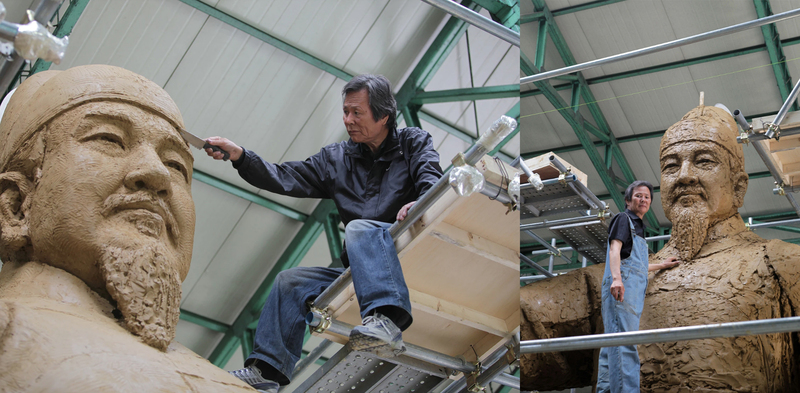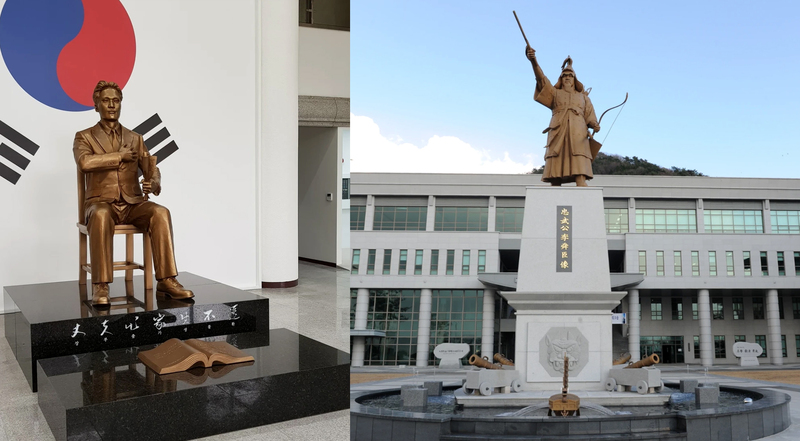- 한국어
- English
- 日本語
- 中文
- العربية
- Español
- Français
- Deutsch
- Pусский
- Tiếng Việt
- Indonesian
By Honorary Reporter Monthi Rosselini from Indonesia
Photos: Kim Young-won
Kim Young-won is a veteran sculptor with over 40 years of experience in his craft. He is most famous for creating the huge statue of King Sejong the Great installed at Gwanghwamun Square in Seoul.
In 2012, he retired as professor and dean of fine arts at Hongik University but has served as chair of the board of the Korean Sculptors Association since 2008. At 76, he said qigong meditation is the inspiration for his work, a practice he has done for more than 30 years.
The following are excerpts from an email interview with him held between October and December last year.
What was your approach in making the statue of King Sejong the Great?
King Sejong the Great was one of the best leaders in Korean history who received the most respect from Koreans. The spirit of love for the people is something leaders past and present should have. I worked day and night to express this meaning well in my work.

Kim Young-won's most famous work is the statue of King Sejong the Great at Gwanghwamun Square of Seoul.
You also made sculptures of Admiral Yi Sun-shin and pro-independence activist Yun Bong-gil. Why do you like doing historical figures?
I think that statues of historical figures aren't just sculptures or monuments but things that can create and spread new discourse centered on the statues. History isn't a stuffed artifact but actively lives and breathes, reflecting on the past and presenting a new path. The important thing is that by sharing my spiritual and historical philosophy around the work, it can present a new historical horizon for the people.

Left is a sculpture of pro-independence activist Yun Bong-il in Seoul and right is that of Admiral Yi Sun-shin in Changwon, Gyeongsangnam-do Province.
In your opinion, what is the importance of sculptures in the modern world?
A sculpture that can be installed at an open-air space instead of a limited indoor space is a genre that anyone can enjoy. Now is the time to face the technology of future civilization with precise 3-D thinking rather than flat thinking. This era requires elements and senses of sculpture.
What activities have you done lately?
In September last year, Yunseul Museum of Gimhae Arts & Sports Center (in Gimhae, Gyeongsangnam-do Province) held a special exhibition of my works. On Dec. 14, I won the inaugural Kim Bok-jin Art Award, which is named after the country's first sculptor. And through Jan. 28, the Cheongju Museum of Art (in Cheongju, Chungcheongbuk-do Province) displays 100 of my sculptures and paintings that I've created over the last 40 years.
What is your hope for the future of sculpture in Korea?
My wish is for Korean sculptures to be more active at outdoor exhibitions. I look forward to the activities of the next generation using methods combining advanced technology.
jihlee08@korea.kr
*This article is written by a Korea.net Honorary Reporter. Our group of Honorary Reporters are from all around the world, and they share with Korea.net their love and passion for all things Korean.